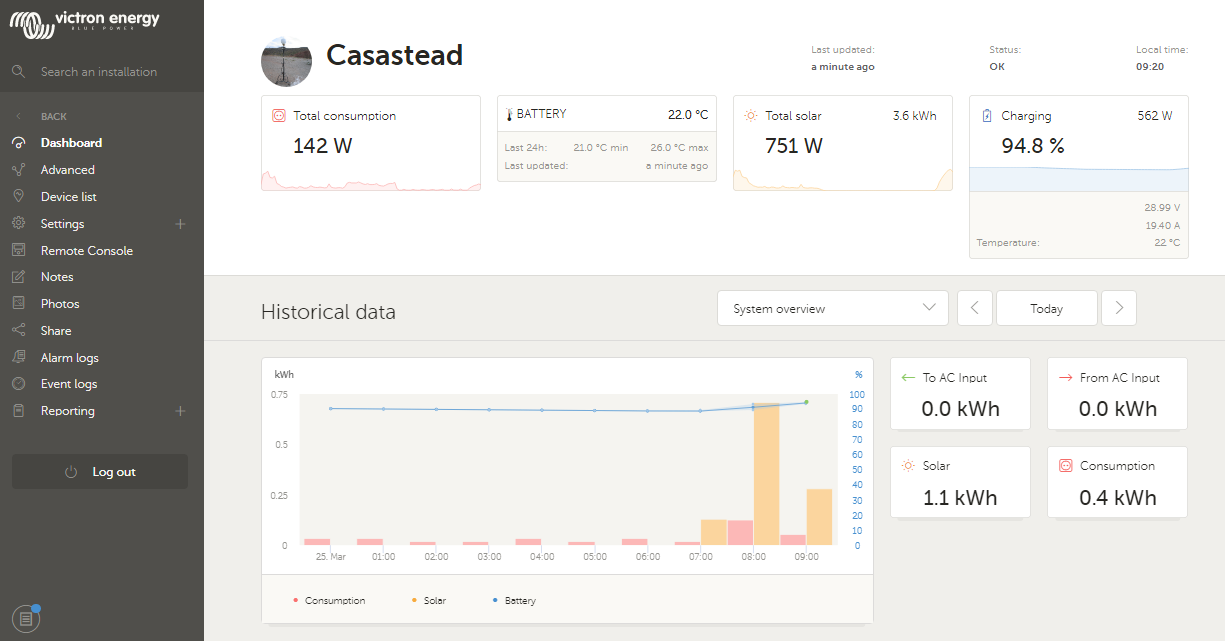I connected my new Smart Shunt yesterday and thanks to clarification on some aspects by Axexandra I understand it better and it seems to be working well with a few exceptions .
Average discharge: The cumulative Ah drawn divided by the total number of cycles
Total charge cycles: The number of charge cycles over the lifetime of the battery monitor. A charge cycle is counted every time the state of charge drops below 65% and then rises above 90%
My SOC is only ever less than 70% on the rare occasion we had a bad day weather wise so it seems that the Average Discharge will never be correct . History shows Deepest Discharge , Last Discharge and Cumulative Ah Drawn but nothing displayed for Average Discharge . Is there a work around .
This morning is the first time I can look to see how my batteries performed last night on Victron Connect . There is no TIME REMAINING shown , just – , is that because the Solar is charging at the moment and its only relevant at night when there's no input .
I changed the default Battery Efficiency from 95% to a more realistic 85% , what data is this information needed to calculate .
Do I need to set the Peukert factor with shallow discharges , my normal consumption at night is at most 3% of Battery Bank capacity .
Lastly , why does the VRM Dashboard occasionally become corrupt with a different layout and has anyone found a way to restore it , its been this way for 12 hours now and I have tried Logging out , Turning off my Internet , Unplugging the Cerbo , nothing has any effect . Its the same on Windows Laptop with different browsers and Android phone .

Many thanks to anyone who can assist .
